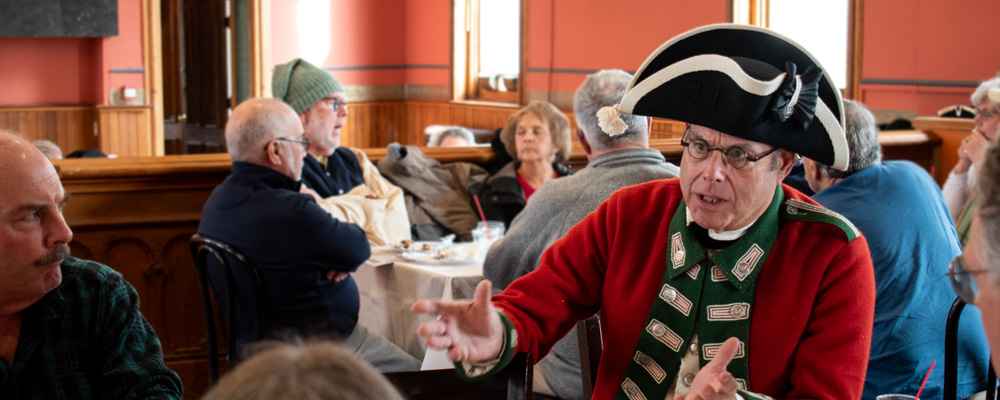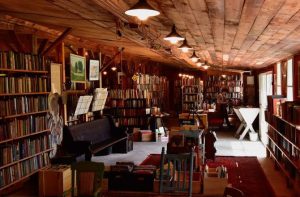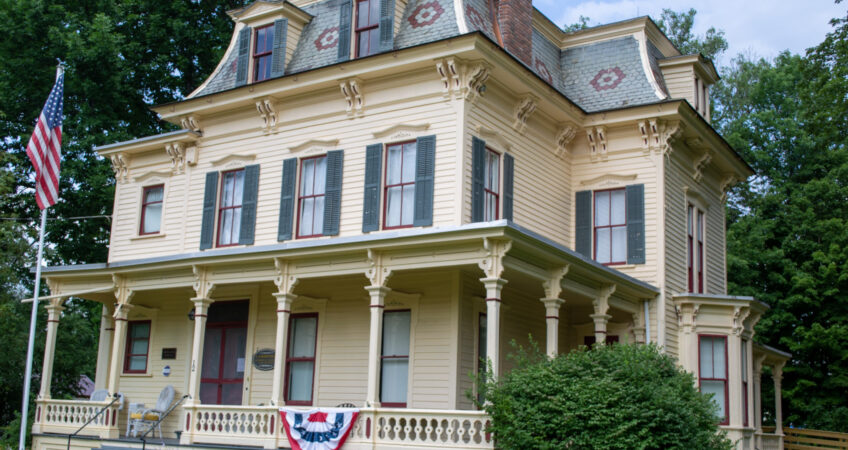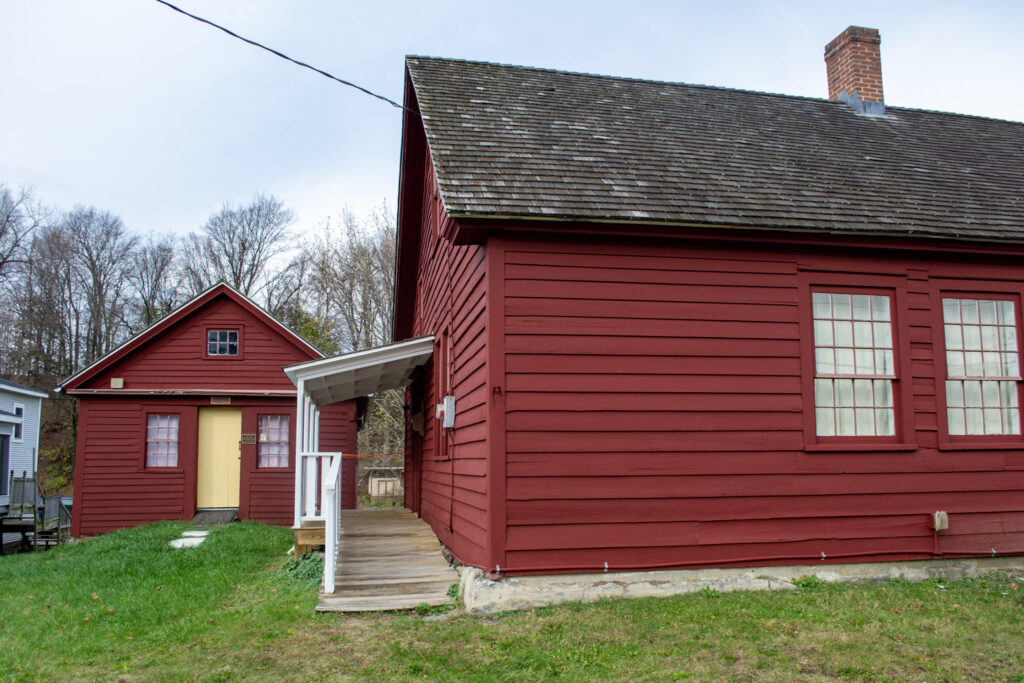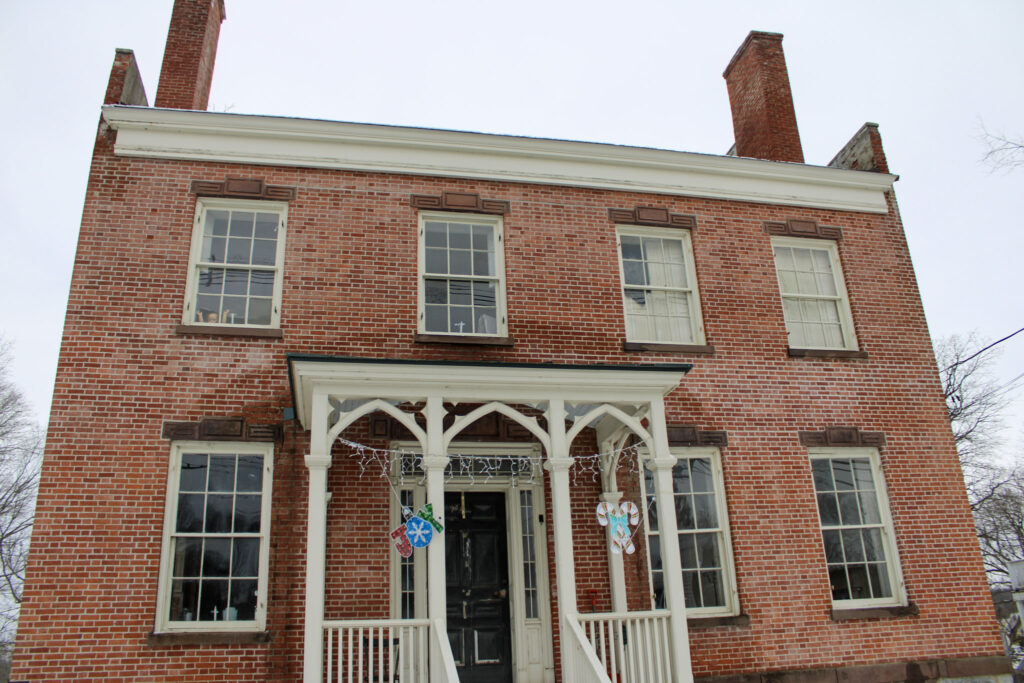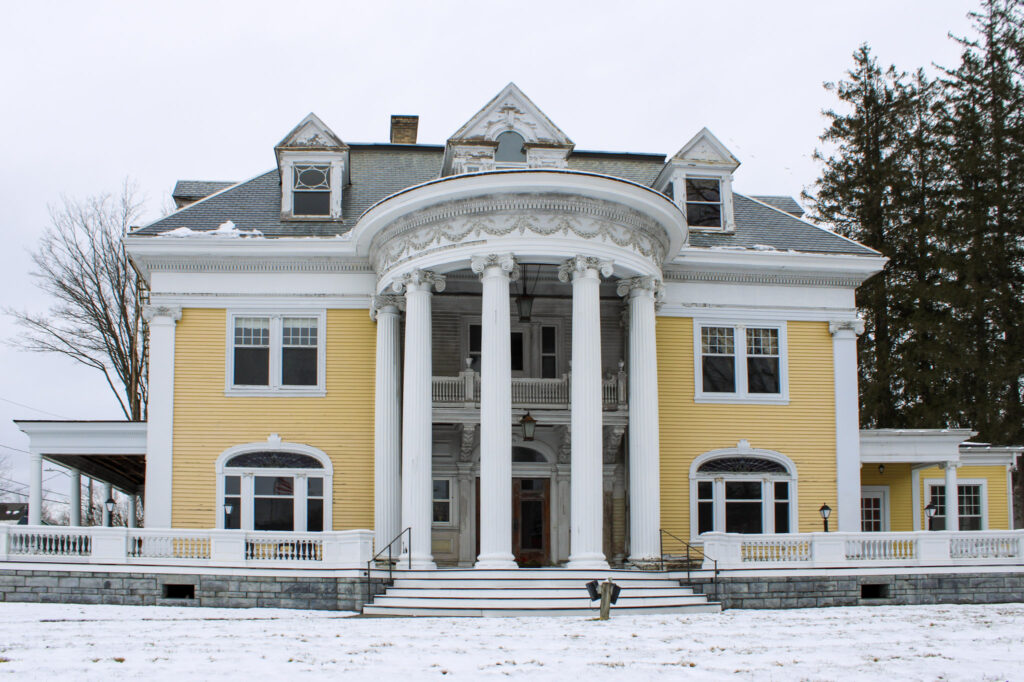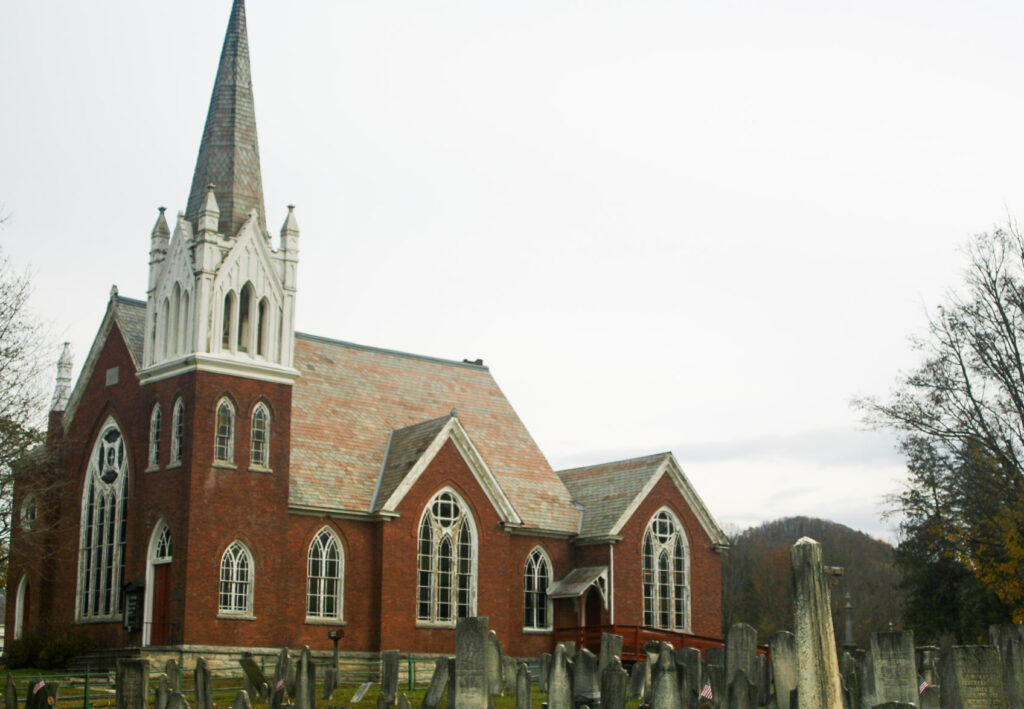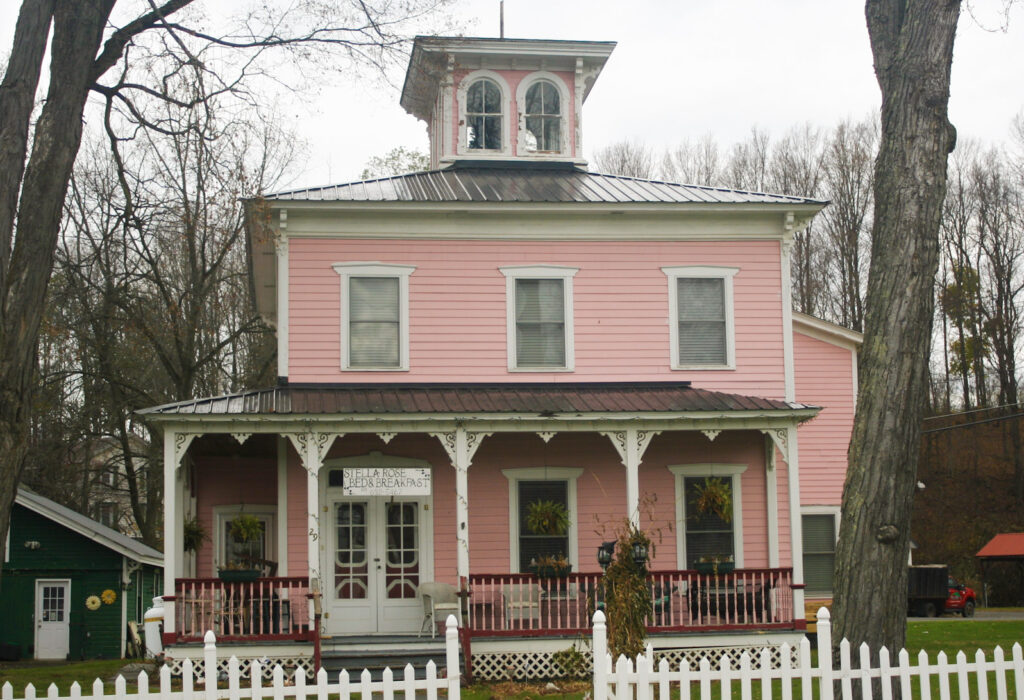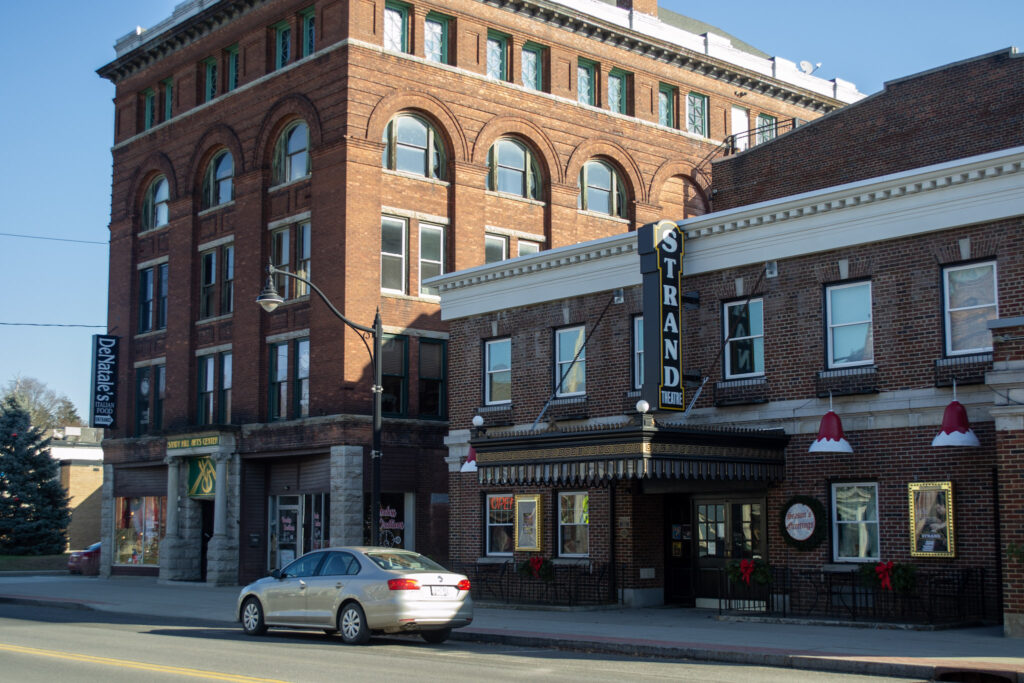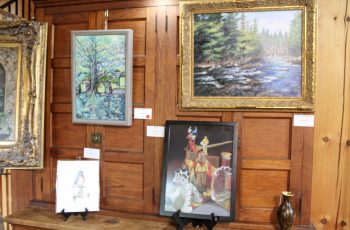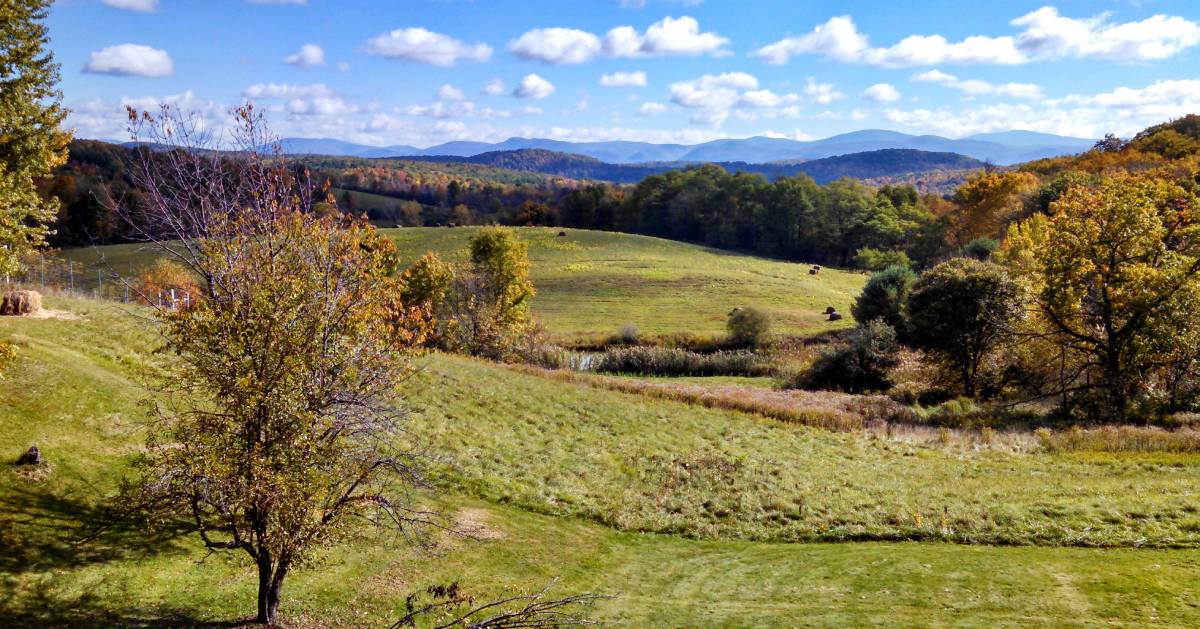See Historic Buildings from Different Eras Side-by-Side
Visiting Washington County, New York is like traveling back in time. After all, our historic farmland & charming small towns perfectly showcase our rich heritage through architecture, art, music and more.
Having been settled since before the United States existed, Washington County’s historic roots run deep! As you explore this county, you’ll find many American domestic architectural styles, from the colonial era to the modern day.
Let’s explore some of the styles of architecture you’ll find around Washington County, New York:
Colonial Architecture (approx. 1630 – 1780)
Pictured: Museum & Civil War Enlistment Center in Hartford, New York
Throughout the region, visitors will discover many surviving buildings dating back to the era when the region became settled by European colonists.
The “First Period” of American architecture consists of structures made out of necessity, featuring simple designs with functional layouts. While they exist across the county, many Colonial-era buildings are found riverside communities like Fort Edward.
Colonial buildings are recognizable by their prominently centered chimneys, diamond-paned casement windows and steeply-pitched roofs which easily shed snow. Due to locally abundant timber, many homes were made of wood frames covered with unpainted clapboards or shingles. A little later, the Colonial style elevated New England homes with a gabled roofs, flatter clapboards, corner & sill boards and grander entryways.
Toward the end of the era, the Georgian style brought Italian Renaissance influences from Europe to the Americas. Named for the English kings George, the orderly symmetry of this style added dormers, quoins, blinds and end chimneys to the local look.
Looking for great examples of Colonial architecture within Washington County, New York? Burton Hall (Easton’s town hall) features strong influences of Colonial Revival and Classical Revival designs, as well as the Elisha Straight House/Museum & Civil War Enlistment Center. Or, visit the Colonial Revival brick post office in either Hudson Falls or Granville, both of which were built during the New Deal era of the 1920s!
Federal / Early Republic Architecture (approx. 1780 – 1820)
Pictured: Ransom Stiles House in Argyle, New York
As life in America developed, so did its architectural styles. After the Colonial period came the Federal/New Republic style, characterized by symmetrical, classically-inspired details and the use of brick or stone. These homes are often boxy in appearance, but maintain symmetry with prominent end chimneys, corner boards, blinds and a low-pitched roof.
Notable examples of local Federal architecture you can visit include the Ransom Stiles House in Argyle, built in 1820. Local rumor has it that tunnels led from the house to the Moseskill River to help slaves escape capture along the Underground Railroad!
Furthermore, visit Hubbard Hall on the historic Main Street of the Victorian village of Cambridge to see another great example of Federal-style architecture. And why not see a performance or take a class while you’re there? Nearby, you can drive by Susan B. Anthony’s childhood home in Battenville to see another historic Federal structure!
Greek Revival Style (approx. 1820 – 1860)
Pictured: Rice Mansion Inn in Cambridge, New York
Some argue that Greek Revival is the first American style, as it returned to the roots of architecture. This movement was inspired by the architecture of ancient Greece and Rome, its defining symmetrical facades, pediments, columns and friezes adding elegance to the local style. These classical elements were scaled down for early residences, which you can see in many local historic buildings today.
Visit the Old Stone House Library to see a mix of both Federal and Greek Revival design elements. Built around 1825, it’s the oldest stone house remaining in Washington County, New York! Additionally, the beautiful Rice Mansion Inn (currently closed) in Cambridge is another historic mix of Federal and Greek Revival styles. And finally, you can visit the Fort Miller Reformed Church, built in 1816, to see a fantastic local example of a purely Federal-inspired structure.
But why not experience history for yourself? Stay at one of this area’s charming historic stays, including the Hopkins House Farm‘s Federal farmhouse, built in 1790.
Gothic Revival Architecture
Pictured: Hartford Baptist Church in Hartford, New York
The Gothic Revival style was popular in the United States from the 1830s to the 1870s. It was inspired by the architecture of the Middle Ages, and featured pointed arches, ribbed vaults, and stained glass windows. These beautiful features made it popular with local religious groups, who emulated the style in the New World.
One great example of Gothic Revival architecture in Washington County is the Hartford Baptist Church. It was built in 1891 on the same spot as the original 1789 church, the fourth to occupy the site. Plus, the St. James Episcopal Church in Fort Edward and the South Granville Congregational Church are more local examples of Gothic Revival design.
Finally, for an absolutely singular piece of Victorian Gothic/Gothic Revival architecture, you’ll want to stop by Skene Manor, which has been lovingly restored and is open to the public from late spring to December.
Victorian Era Architecture (approx. 1860 – 1910)
Pictured: The Stella Rose Bed & Breakfast in Hartford, New York
See the wide range of Victorian architectural styles when you visit Washington County, including prime examples of the Italianate, Second Empire, Shingle and Queen Anne styles. Victorian architecture is characterized by its eclecticism and ornamentation, evidenced by often asymmetrical designs, extravagant decorative paneling and bold colors. These bright-colored, highly-detailed homes were often called “Painted Ladies.”
This era of homes was defined by the use of new materials such as cast iron and plate glass, as well as new features such as bay windows, cupolas, decorative windows and prominent porches!
You can see many great examples of Victorian architecture side-by-side with other styles in special places like the historic district of Greenwich, New York, home to over 160 historic buildings. These showcase a range of styles from the 19th and 20th centuries, including Federal, Greek Revival, Italianate, Queen Anne and Colonial Revival. In fact, Greenwich features some of the North Country’s most intact surviving neighborhoods, giving a good glimpse into what life looked like in the olden days!
Want to spend the night in a historic Victorian home Book a stay at the Stella Rose (pictured above) in Hartford to experience a true small-town welcome.
There are even more great examples of Victorian architecture in the area! Visit the former Delaware & Hudson Railroad station in Fort Edward. It still serves the community as an Amtrak station, as well as the home of Evergreen Bicycle Works! You’ll also love the look of the nearby Old Washington County Courthouse building at 122 Main St, Hudson Falls, NY 12839. Of course, you’ll want to be sure to explore the many other historic buildings nearby! There are many gems within our historic neighborhoods.
20th Century Architecture
Pictured: Sandy Hill Arts Center and the Strand Theater in Hudson Falls, New York
Many of the buildings we’re used to seeing in cities across America were built in more modern, 20th century styles. These include the Craftsman, Art Deco, Modern, and International movements. But they’re not as common in Washington County! In fact, you’ll see that many of our historic buildings have been preserved and retrofitted to suit modern needs.
But it’s not all older buildings here. Examples of 20th-century architecture in Washington County include two neighboring buildings in Hudson Falls! Stop by the Art Nouveau-influenced Sandy Hill Arts Center built in 1901, and see a performance at the next-door Art Deco-era Strand Theatre from 1923. And to see some local Modernist buildings, check out the County Courthouse & Administration Building in Fort Edward, built in the early 1960s.
As you can see, Washington County’s architectural heritage is a valuable asset that reflects the region’s history, culture, and identity. By preserving and celebrating our local historic buildings and structures, we help ensure these important landmarks will continue to inspire and educate future generations.
Want to know more about Washington County, New York?
Of course, there’s much more to beautiful Washington County than well-preserved historic architecture!
Still looking for more cool stuff to do? Check out our experiential Trails, exploring everything from antiques, maple and fiber to ice cream, hands-on experiences and haunted places! And while you’re in the area, pop into Fort Edward to see their historic canals and related locations, which include the Champlain Canal and Glens Falls Feeder Canal!
For more neat information about local history, visit our 250th Anniversary page.
